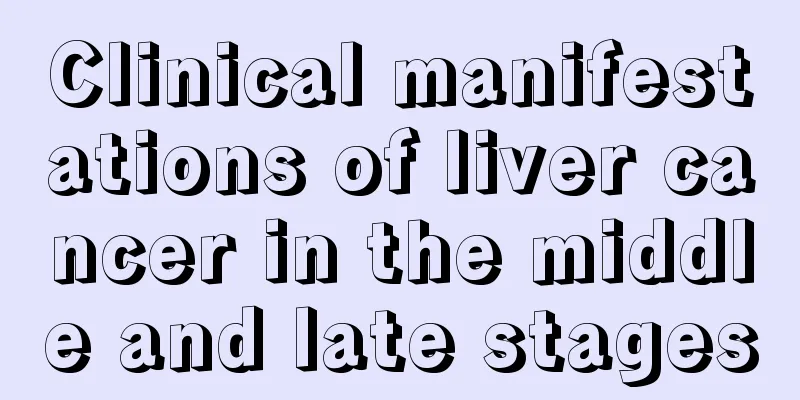Diagnosis and treatment of hypothyroidism

|
Hypothyroidism is an abbreviation for hypothyroidism, a disease caused by insufficient secretion of thyroid hormone or insufficient physiological effects. The clinical symptoms of hypothyroidism are not particularly obvious, so many people always find out that they have hypothyroidism when it becomes serious, thus missing the effective treatment time. So what are the diagnosis and treatment of hypothyroidism? Diagnosis: Mainly laboratory examination, the commonly used test items are serum TSH, T3, T4, FT3, FT4. In hypothyroidism, the thyroid-stimulating hormone (TSH) secreted by the pituitary gland is significantly higher than normal, while the thyroid hormones T4 and FT4 secreted by the thyroid gland in the blood are lower than normal. T3 and FT3 may be normal in mild patients, but are significantly reduced in severe patients. Some patients with hypothyroidism who do not have any symptoms may only have elevated TSH in their blood. In a small number of patients, the lesion is not in the thyroid gland, but in the pituitary gland or hypothalamus. In this case, both TSH and thyroid hormone in the blood decrease. Patients with Hashimoto's thyroiditis often show positive changes in TGAb and TPOAb. Hypothyroidism is a group of systemic endocrine diseases caused by insufficient synthesis, secretion or biological effect of thyroid hormone TSH due to various reasons, referred to as hypothyroidism. What are the treatments for hypothyroidism? (1) Because patients have apathetic expressions, depression, and withdrawn temperaments, we should strengthen psychological care for them, show concern and care for them, take the initiative to talk to them, and exchange ideas with them, so as to relieve their worries, increase their interest in life, and build their confidence in overcoming the disease. (2) Patients with severe illness should stay in bed and rest absolutely: Because patients suffer from anorexia and often have nutritional disorders, they should be encouraged to eat and choose a high-calorie, high-protein, easily digestible, low-salt diet. The diet should be adjusted to promote the patient's appetite. Comatose patients should be given a nasogastric liquid diet. (3) Patients often have chills and low body temperature. If the body temperature is below 35°C, they may experience shallow and slow breathing, bradycardia, low blood pressure, drowsiness and other symptoms. Most of these are precursors to myxedema coma and require immediate rescue and warming measures such as adding quilts and placing hot water bottles. At the same time, care should be taken to prevent burns. (4) Maintain smooth bowel movements: Patients with stubborn constipation can be given laxatives, such as laxative tablets, senna leaves, etc. If necessary, give enema or low-pressure saline enema to relieve constipation. (5) Strengthen skin care for patients: scrub the patient with warm water once a day and apply lubricant to prevent skin dryness and infection. For patients in coma due to myxedema, the "four diligences" should be adhered to: frequent turning over, frequent tidying up, frequent massage, and frequent scrubbing to effectively prevent the occurrence of bedsores. (6) Accurately observe and record the patient's urine output, closely monitor the disappearance of systemic edema, and adjust the intake and output of water and electrolytes according to the speed of edema disappearance. (7) Nursing methods for hypothyroidism also include increasing the dosage of thyroid preparations as prescribed by the doctor and closely observing the efficacy and side effects of the drugs. If the patient experiences symptoms such as tachycardia, insomnia, excitement, sweating, etc., he or she should follow the doctor's advice to reduce the dosage or temporarily stop the medication. Adult hypothyroidism is more common in middle-aged women, with a male to female ratio of 1:5. It has an insidious onset and progresses slowly. Afraid of cold, seldom speaks and feels weak, has a dull expression, thick lips and a large tongue, dry and cold skin, and sparse eyebrows with the outer 1/3 falling off. |
<<: Is neck pain a problem of cervical spondylosis?
>>: There is mucus in the urethra in the morning, what's going on
Recommend
What are the characteristics of glioma hazards
Clinically, glioma is one of the tumors with high...
What should I do if I have a bad liver?
The liver is an important organ for the human bod...
How many days of routine flushing is required after bladder cancer surgery?
Bladder irrigation after bladder cancer surgery i...
How many times does benign epilepsy occur in a year?
Epilepsy is one of the major diseases that affect...
Causes of pancreatic cancer
The incidence of pancreatic cancer remains high. ...
Is rooster an allergenic food?
Irritating foods refer to foods that can cause al...
Is surgery necessary for mid-stage brain cancer?
Intracranial malignant tumors, including gliomas,...
Is it better to have a thick or thin placenta?
When a woman is pregnant for a certain period of ...
How to adjust hypoglycemia? Five ways to say goodbye to worries
Hypoglycemia is a problem that many people will e...
How long does it take to recover from chickenpox
Chickenpox is a disease that often occurs in chil...
What to do if herpes causes fever? How to treat herpes
When you have herpes, translucent or yellow-white...
What is the reason for frequent migraines
Migraine is a relatively common disease character...
What to use instead of shampoo
There are many kinds of modern detergents, and de...
Uses of white gasoline
White gasoline has a wide range of uses. It can b...
What extrapulmonary symptoms can lung cancer cancer cell secretions cause? 4 extrapulmonary symptoms of lung cancer you should know
Many people think that lung cancer will mainly af...









